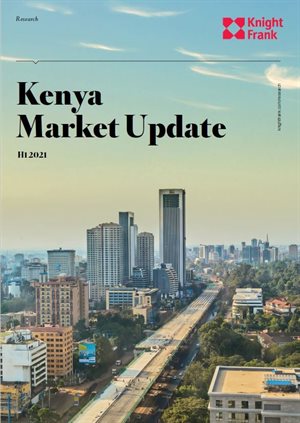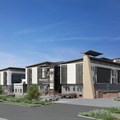Knight Frank Kenya notes increase in market activity in H12021

Prime residential sale prices in Nairobi marginally improved by 0.1% over the past 12 months to June 2021, compared to a 5.1% decline in a comparable period in 2020, providing signs the market is stabilising. This is mainly attributed to a realisation amongst sellers that prices have adjusted and encouraging signs of buyers resuming their investment plans which were halted last year due to the pandemic.
Increased landlord, seller flexibility
Ben Woodhams, Knight Frank Kenya MD, said, “There has been a notable increase in market activity in the first half of 2021 and we expect prime residential sale prices and rental rates to gradually improve in the second half of 2021 due to the increasing flexibility from landlords and sellers, projected positive economic growth and containment of the virus.”
In the office market, a similar trend is evident with prime office rents decreasing marginally in the first half of 2021 from $1.12 (KES121) to $1.10 (KES119) per square foot per month. The most significant and positive data is the absorption of Grade A and B office space increase by 64% in the review period compared to the second half of 2020. This dramatic increase was mainly attributed to the rollout of vaccinations globally, providing occupiers with confidence to resume looking at their occupational strategies, evidenced further by the gradual physically return of employees to their offices. In addition, Knight Frank has seen a reduced supply of new office developments, resulting in occupiers taking up space in existing commercial buildings and landlords becoming more flexible by reducing their rental terms. Similar to 2020, average occupancy rates across commercial buildings over the review period were at approximately 73%.
Employers, employees adapting to new working patterns
Anthony Havelock, head of agency, said, “Although the pandemic is still having an ongoing impact on working practices and the occupation of offices, there are increasing signs of both employers and their employees adapting to new flexible working patterns and a weariness to virtual meetings, hence a desire to return to the formal workplace in a responsible manner. This reinforces the need for physical offices where collaboration and brand awareness are paramount and has been demonstrated by the increase in take up and active requirements now in the market. The higher take up and demand for offices in the first half of 2021 was due to an improving global economic outlook and both local and international occupiers taking the opportunity to upgrade from their older accommodation to modern Grade A offices, taking advantage of the reduced headline rents and tenants' incentives that are currently available - we refer to this as a 'flight to quality'.”
The ongoing pandemic and economic headwinds continued to adversely affect the retail sector as prime retail rents decreased from $4.2 (KES456) to $4.00 (KES 434) per square foot per month over the review period. The marginal decline was mainly attributed to the economic slowdown, reversal of various tax reprieves in January 2021, resulting in less disposable incomes and re-introduction of containment measures in March 2021. Although, once again, the rate of the decline has eased.
Grocery retailing remains one of the most active segments
Similar to 2020, occupancy levels for retail centres averaged 70-80%, although more established malls recorded higher occupancy levels of up to 90%. Grocery retailing remained one of the most active segments in the retail sector. Leading local and international supermarket operators continued to battle for market-share dominance through expansion and capitalising on the void left by outgoing or struggling retailers.
Ashmi Shah, retail portfolio manager, said, “The retail market continues to be a tenants’ market, although the second half of 2021 projects a positive outlook for this sector mainly due to the economic recovery, rollout of vaccinations nationwide, the reopening of the economy and the easing of containment measures. Positively, one sector of the market which we are witnessing significant interest is smaller convenience centres.”
Download the full report here.

